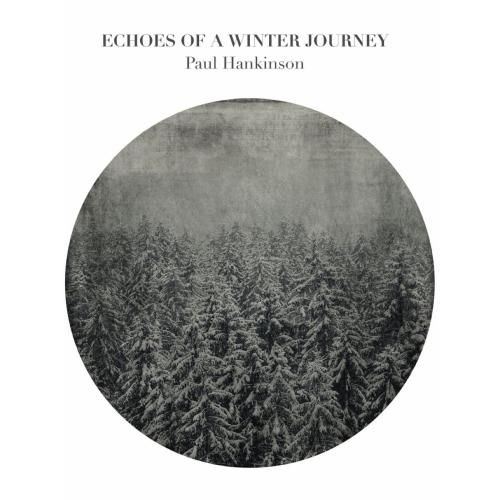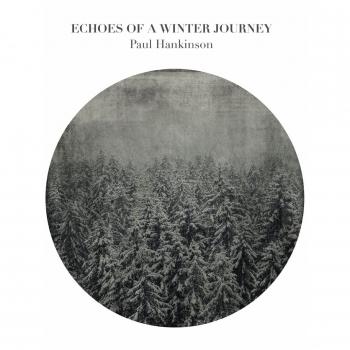
Hankinson: Echoes of a Winter Journey Paul Hankinson
Album info
Album-Release:
2017
HRA-Release:
07.12.2017
Album including Album cover
- 1 Fantasie 04:40
- 2 Nimmer und Nimmermehr 03:23
- 3 Liebesglück 07:25
- 4 November 01:23
- 5 Augenblick 04:44
- 6 Sehnsucht 06:22
- 7 Und was sie stillt 03:57
- 8 Nur Sterne belauschen uns 01:42
- 9 Komm mit mir 05:30
- 10 Gute Nacht 05:36
Info for Hankinson: Echoes of a Winter Journey
When the Australian pianist Paul Hankinson reflects upon the particular Schubert moments which inspired his purely instrumental solo piano album “Echoes of a Winter Journey” they all share one thing in common: They are not merely musical moments-in-passing but rather heart-stopping miniatures of pure emotion which, from the very first seconds, unfold and develop a fascinating life of their own. Just like those moments when, walking through the city lost in thought, hectic with to-do-lists, a familiar fragrance worn by a passing stranger suddenly triggers a flash-flood of memories until everything is illuminated.
On “Echoes of a Winter Journey” Hankinson (based in Berlin since 2006) offers new interpretations of ten Schubert motives. Intuitive but not improvised, the album versions are intentionally defined pieces. Only two of the pieces were actually inspired by Franz Schubert’s song cycle “Winterreise” (1827): ‘Gute Nacht’ grows out of the opening song of the same title, ‘Komm mit mir’ is based on a motif from the final song, ‘Der Leiermann’. Hankinson, 41, would like the album title to be interpreted as “an invitation to the mood of the record” – “It’s more about exploring this Schubert-feeling and in particular my memories of these little magical heartbreaking moments. Somehow there is winter in all of them.”
It’s fine, filigree, focused. But also: fleeting, contemplative, heavy with a blanket of snow. Yet the pieces on “Echoes of a Winter Journey”, at least in recollection and despite all melancholy, always have an element of hope. In keeping with the spirit of Albert Camus, who said: “In the depth of winter, I finally learned that within me there lay an invincible summer.” This is music, furthermore, in which the nuances in the silence between the notes are felt to be an equally valued part of the piece. The space allows for one’s own thoughts, feelings and memories.
The idea for the concept album arose in the middle of the everyday: “I was in the supermarket”, explains Hankinson, “when suddenly that motif from ‘Gretchen am Spinnrade’ popped into my head. The rotation of the spinning wheel as a rhythmic cell – it’s fundamentally a pop song! It’s genius. Schubert was 17 when he wrote it. I went home and didn’t allow myself to listen to it. I began to improvise, to play with the motif, based only on what I could remember. I gradually drifted further away from the original but the emotional essence contained in that cell was still present in ‘Nimmer und Nimmermehr’ - the piece which emerged. I didn’t want to change that essence, I wanted to extend and develop it. I wanted to explore the memory of the piece more than the piece itself.” And so the creative process for the album was established, which Hankinson describes as a kind of “distillation”. After 9 months he had filtered ten Schubert moments down to their essence and out of that created ten new pieces of his own.
Not only in the almost hypnotic ‘November’ does Hankinson generate delicate pianistic crystalline figures, gently draping them in a glass cabinet – leaving the door open. Emotional response desired. It comes from the poignant intimacy that occurs when the listener takes this music into their confidence.
“No one feels another’s grief, no one understands another’s joy. People imagine they can reach one another. In reality they only pass each other by”, Franz Schubert once complained and in doing so greatly underestimated the power of his own music. In Hankinson’s variations he achieves a feeling of going into oneself and coming out of one’s shell simultaneously. And this apparent juxtaposition manifests itself as emotional synchronicity. The astounding thing about these Schubert moments, according to the personable Australian, is their ongoing emotional relevance: “You would think they would feel 200 years old, but they don’t. Locked up in these harmonies and melodies are feelings which always ring true and tangible, and so they become our own emotions in the here and now.”
“Echoes of a Winter Journey” was recorded by Wolfgang Loos in the label’s own studio in Berlin Spandau. The studio was a time-honoured ballroom in the 20s and boasts a brilliant acoustic. The implementation of the recording, just like the pieces themselves, was also reduced to the essential. Just Hankinson and a Steinway concert grand. In Symbiosis. The recording took just two days and was barely edited. It was not about seeking perfection but rather the conservation of emotions. It was about creating something which can be of use in people’s everyday lives: perhaps as a meditative oasis of calm. Hankinson would also be glad if people wished to play one piece or another on their own pianos at home, thus adding another ongoing, individual emotional component to the project – corresponding sheet music will be available.
As multifaceted as “Echoes of a Winter Journey” is – from the longing of ‘Fantasie’, through the tender ‘Liebesglück’ to the turbulent ‘Nimmer und nimmermehr’, - the artist Paul Hankinson is equally as versatile. As a three-year-old kid he could already tinkle back any song he picked up from the TV or radio. He began to write his own songs before his first day of school and had even written a musical by the age of 14. He graduated from the Queensland Conservatorium with the University Medal, gave concerts for years, playing Beethoven, Brahms and of course Schubert with complete devotion and won numerous competitions and scholarships.
Following his move to Berlin in 2006, he turned his energies toward pop music resulting in the release of the album “Writ in Water” under the name Montmorensy in 2011. His piano cover of Ed Sheeran’s ‘Perfect’ (interwoven with Pachelbel’s ‘Canon’) has become a YouTube sensation, having already garnered over 2.5 million views. He recently wrote arrangements and orchestrations for the collaboration of the platinum certified Australian pop singer Megan Washington with the Sydney Symphony Orchestra at the Sydney Opera House. Currently Hankinson is working at the Münchener Kammerspiele as composer and pianist for the production of Bertolt Brecht’s “Trommeln in der Nacht”.
One thing remains to be said which is close to his heart: “I know that the classical element can sometimes feel like the music is reserved for an exclusive club. I think Schubert would have detested this elitist attitude – as I do too. He loved to gather his friends in living rooms. It’s really important to me that everyone feels invited to listen to this music, whether they know Schubert or not.”
Paul Hankinson, piano
Recorded, mixed and mastered by Wolfgang Loos at Traumton Studios, Berlin
Paul Hankinson
is an australian pianist, composer and songwriter. In 2006 he moved to Berlin to futher pursue his love of beauty, melancholy, humour and humankind and his alter-ego (kunstlername) Montmorensy was born. He now creates pop music with a classical-theatrical flavour, drawing his inspiration from an eternal sense of wonder at the world, the universe and the poetical way of the every day.
This album contains no booklet.










